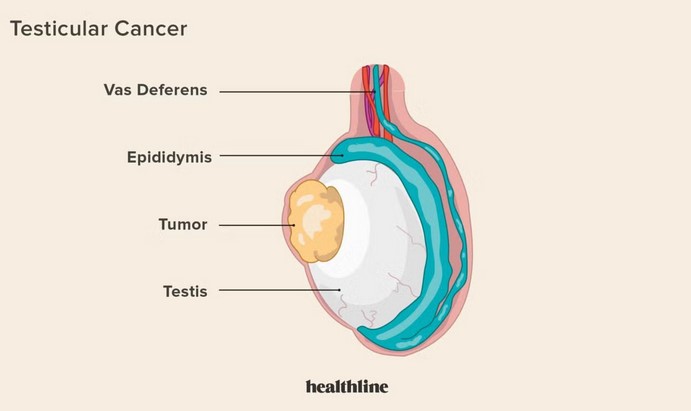
Testicular cancer is one of the most common types of cancer in young men, particularly those between the ages of 15 and 35. Although it is relatively rare, its prevalence among this age group makes early detection crucial. Screening for testicular cancer, if done properly, can lead to early diagnosis and significantly improve treatment outcomes. Unfortunately, many men are unaware of how or when to get screened, leading to delayed diagnoses that can affect treatment options. In this article, we will explore the importance of early screening for testicular cancer, the methods available for screening, and the steps you can take to protect your health.
Why Screening for Testicular Cancer is Important
Early detection is key when it comes to cancer treatment, and testicular cancer is no exception. When detected early, testicular cancer has a high cure rate, even in advanced stages. This is largely because testicular cancer tends to grow slowly and remains localized in the early stages, which makes it easier to treat. In fact, more than 95% of men diagnosed with testicular cancer will survive the disease, especially when it’s caught early.
The risk factors for testicular cancer are still being studied, but certain conditions increase the likelihood of developing the disease, such as a history of undescended testicles, a family history of testicular cancer, and a personal history of testicular cancer. While some risk factors are uncontrollable, awareness of early symptoms and regular self-examinations can play a significant role in early detection.
Testicular cancer typically presents as a painless lump or swelling in one of the testicles, though it can also be associated with pain, discomfort, or a feeling of heaviness in the scrotum. For this reason, it is crucial for men to understand the signs and symptoms and engage in regular screening for testicular cancer.
Methods of Screening for Testicular Cancer
Unlike some cancers, there is no formal, widely endorsed screening test for testicular cancer through medical professionals, especially for men without symptoms. However, there are self-examination techniques and diagnostic tests that can help detect abnormalities in the testicles early. Below, we explore these options.
1. Testicular Self-Examination (TSE)
Testicular self-examination (TSE) is the most accessible and effective method for detecting testicular cancer early. It involves performing a simple exam of the testicles once a month to check for any changes, lumps, or irregularities that might indicate a problem. The goal of TSE is to become familiar with the normal size, shape, and texture of your testicles, so that you can detect any changes that might occur over time.
How to Perform TSE:
- Step 1: Perform the exam after a warm shower or bath, when the scrotum is relaxed.
- Step 2: Stand in front of a mirror to visually inspect your scrotum for any swelling or unusual changes in shape.
- Step 3: Gently roll each testicle between your fingers. The testicle should feel smooth and firm. You should be looking for any lumps or bumps, as well as any change in size or shape.
- Step 4: Check for any discomfort, pain, or unusual heaviness in the scrotum.
- Step 5: If you detect anything unusual, schedule a visit with your healthcare provider.
Although TSE is a vital tool for early detection, it is important to note that not all lumps or changes are cancerous. However, if you do notice any unusual findings, it is crucial to seek medical advice as soon as possible.
2. Clinical Examination by a Doctor
In addition to self-exams, a clinical examination by a doctor is an essential part of early detection. Men who notice any unusual symptoms, such as pain, lumps, or swelling in the testicles, should consult a healthcare provider for a professional evaluation. During the clinical examination, the doctor will physically examine the testicles and scrotum to assess for any abnormalities. If necessary, further diagnostic tests may be ordered to confirm the presence of testicular cancer or other conditions.
What to Expect During the Exam:
- The doctor will check for lumps, swelling, tenderness, and other signs of potential issues.
- They may also ask about your medical history, risk factors, and any symptoms you are experiencing.
- If a lump is detected, the doctor may order additional tests, such as an ultrasound, blood tests, or a biopsy to confirm whether the lump is cancerous.
3. Ultrasound Imaging
If a lump is found during a self-exam or clinical examination, the next step in screening for testicular cancer is often an ultrasound. This imaging technique uses sound waves to create an image of the inside of the scrotum and testicles. Ultrasound is a non-invasive and painless procedure that can help distinguish between benign conditions, such as a cyst, and malignant growths.
Ultrasound is highly accurate in determining whether a lump is solid or fluid-filled, and it can help doctors identify other abnormalities, such as enlarged lymph nodes, which could indicate that the cancer has spread.
4. Blood Tests for Tumor Markers
Blood tests can also play an important role in screening for testicular cancer. Certain substances called “tumor markers” are often elevated in the blood when testicular cancer is present. These markers include alpha-fetoprotein (AFP), human chorionic gonadotropin (hCG), and lactate dehydrogenase (LDH). Elevated levels of these markers do not necessarily indicate cancer, but they can help doctors confirm a diagnosis when combined with imaging tests like ultrasound.
Blood tests are typically used in conjunction with other diagnostic tools to provide a more complete picture of your health and the possible presence of cancer.
When to Get Screened for Testicular Cancer
While there is no official recommendation for routine screening for testicular cancer in healthy men without symptoms, it is important for individuals at higher risk to stay vigilant. Men with a family history of testicular cancer or those who had an undescended testicle during childhood should consider discussing their risk with a healthcare provider and may benefit from more frequent screening.
Even for men without a known risk factor, regular self-exams are encouraged starting in adolescence or early adulthood. Early detection through TSE or a doctor’s visit can lead to timely treatment and a higher chance of successful recovery.
Screening for testicular cancer is an essential part of early detection and prevention. While there is no universal screening test for the condition, methods such as testicular self-examination, clinical evaluation by a doctor, ultrasound imaging, and blood tests can all play significant roles in identifying potential issues. By performing regular self-exams and seeking professional evaluation when necessary, you can greatly enhance your chances of detecting testicular cancer in its early stages. Remember, early detection not only increases the chances of successful treatment but also improves overall outcomes. If you notice any unusual symptoms or changes in your testicles, don’t hesitate to consult a healthcare provider. Early screening for testicular cancer can be life-saving and should be a proactive part of your health regimen.
